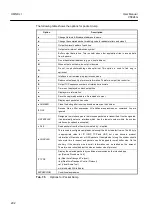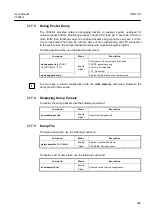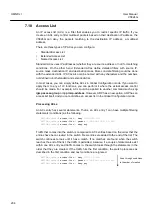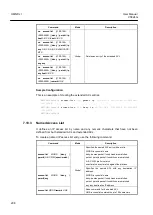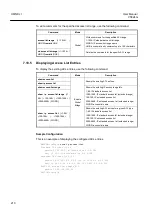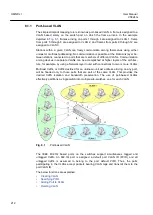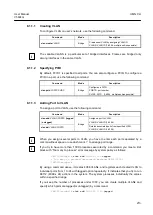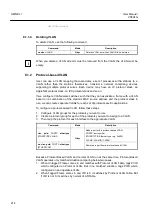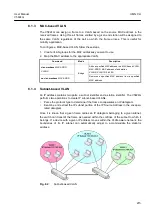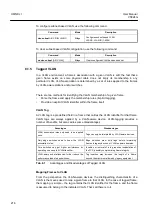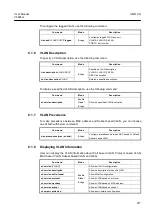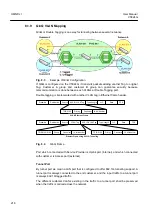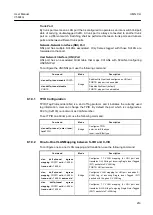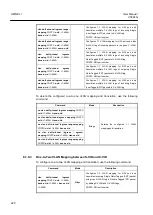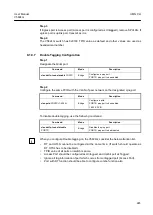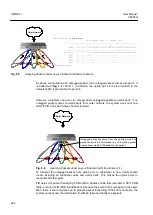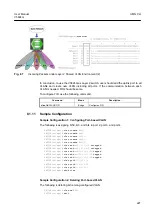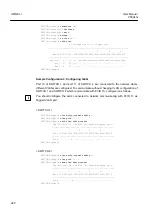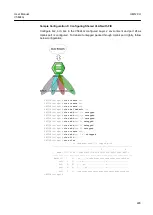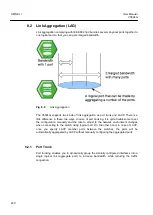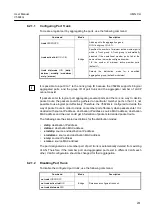
UMN:CLI
User Manual
V5824G
216
To configure subnet-based VLAN, use the following command.
Command
Mode
Description
vlan subnet
A.B.C.D/M
VLANS
Bridge
Configures subnet based VLAN.
VLANS: VLAN ID (1-4094)
To clear subnet-based VLAN configuration, use the following command.
Command
Mode
Description
no vlan subnet
[
A.B.C.D/M
]
Bridge
Clears configured VLAN based on subnet.
8.1.5
Tagged VLAN
I
n a VLAN environment, a frame’s association with a given VLAN is soft; the fact that a
given frame exists on some physical cable does not imply its membership in any
particular VLAN. VLAN association is determined by a set of rules applied to the frames
by VLAN-aware stations and/or switches.
There are two methods for identifying the VLAN membership of a given frame:
•
Parse the frame and apply the membership rules (implicit tagging).
•
Provide an explicit VLAN identifier within the frame itself.
VLAN Tag
A VLAN tag is a predefined field in a frame that carries the VLAN identifier for that frame.
VLAN tags are always applied by a VLAN-aware device. VLAN-tagging provides a
number of benefits, but also carries some disadvantages.
Advantages
Disadvantages
VLAN association rules only need to be applied
once.
Tags can only be interpreted by VLAN aware devices.
Only edge switches need to know the VLAN
association rules.
Edge switches must strip tags before forwarding
frames to legacy devices or VLAN-unaware domains.
Core switches can get higher performance by
operating on an explicit VLAN identifier.
Insertion or removal of a tag requires recalculation of
the FCS, possibly compromising frame integrity.
VLAN-aware end stations can further reduce the
performance load of edge switches.
Tag insertion may increase the length of a frame
beyond the maximum allowed by legacy equipment.
Tab. 8.1
Advantages and Disadvantages of Tagged VLAN
Mapping Frames to VLAN
From the perspective the VLAN-aware devices, the distinguishing characteristic of a
VLAN is the means used to map a given frame to that VLAN. In the case of tagged frame,
the mapping is simple
– the tag contains the VLAN identifier for the frame, and the frame
is assumed to belong to the indicated VLAN. That
’s all there is to it.

